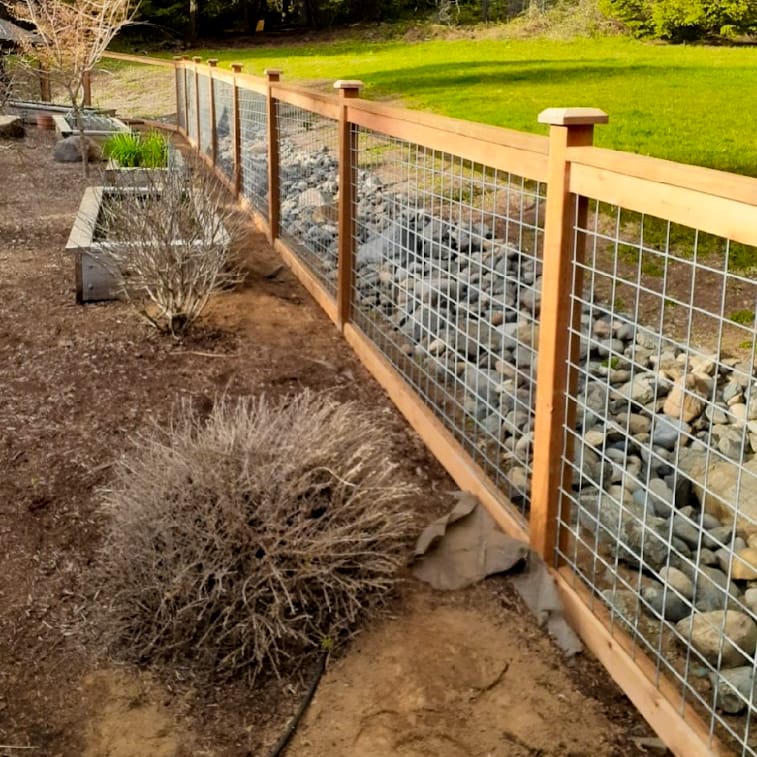All Categories
Featured

Picking the right fence product for your residential property is a choice that balances looks, capability, and budget plan. Among one of the most preferred alternatives, wood, plastic, and aluminum each offer one-of-a-kind advantages and disadvantages. Comprehending these can aid you make an educated choice that straightens with your needs. Right here's a malfunction of the benefits and drawbacks of these 3 typical fencing products.
Wood Secure Fencing. Timber fencing has been a timeless option for house owners due to its all-natural appeal and adaptability.
Pros:. Visual Allure: Wood supplies a timeless and cozy look that enhances a selection of architectural designs. Adjustable: It can be repainted, discolored, or reduce right into unique styles to fit personal preferences. Cost-Effective: Initially, wood fence can be a budget friendly choice contrasted to various other products. Eco-Friendly: Timber is a renewable energy and can be sustainably sourced. Cons:. High Maintenance: Wood calls for regular securing, staining, or painting to prevent rot, insect damage, and weathering. Longevity Concerns: Without correct treatment, timber can warp, split, or decay over time, especially in areas with high moisture. Much shorter Lifespan: A timber fencing normally lasts 10-20 years, depending on the type of wood and level of maintenance. Timber is excellent for those that value a standard look and want to devote to its maintenance.
Plastic Fence. Vinyl is a contemporary, low-maintenance fence alternative that has grown in popularity recently.

Pros:. Reduced Upkeep: Plastic does not call for paint, discoloration, or sealing and can be easily cleaned with soap and water. Weather Resistant: It withstands rough weather without decaying, rusting, or bending. Resilient: Plastic fencings can last 20-30 years with minimal maintenance. Selection of Styles: Readily available in several shades, styles, and textures, some vinyl alternatives imitate the appearance of timber. Cons:. Greater Upfront Expense: Plastic fence can be more pricey at first compared to timber. Brittleness in Winter: In severe cold, plastic might break or become brittle. Limited Repair works: Individual panels can be hard to replace, requiring mindful matching to the existing fencing. Plastic is best suited for homeowners seeking a long lasting, low-maintenance option with modern-day aesthetics.
Aluminum Fence. Aluminum fencing is a lightweight and long lasting alternative, often picked for its modern-day look and adaptability.
Pros:. Rust-Resistant: Light weight aluminum doesn't rust, making it an exceptional option for moist or wet environments. Reduced Maintenance: Needs marginal maintenance and is simple to tidy. Sturdy: While lightweight, light weight aluminum is strong enough to hold up against several environmental problems. Long Life-span: Can last numerous years without significant wear or wear and tear. Selection of Styles: Offers a elegant and streamlined appearance, frequently used for ornamental or decorative purposes. Disadvantages:. Higher Price: The first financial investment for aluminum fencing is greater than wood or plastic. Much Less Personal privacy: Aluminum fences are often designed with open pickets, making them much less efficient for privacy. Vulnerable to Damages: Although sturdy, light weight aluminum can be dented by strong effects. Light weight aluminum is excellent for those looking for a fashionable, long-lasting option that calls for minimal care.
Making the Right Option. Each fence product-- aluminum, timber, and vinyl-- uses distinct benefits and drawbacks. Your decision must rely on your specific concerns, such as budget, upkeep preferences, environment, and visual objectives:
Pick timber if you enjoy a conventional appearance and don't mind regular maintenance. Select vinyl if you desire a low-maintenance, weather-resistant fencing with contemporary charm. Select aluminum if you prioritize sturdiness, corrosion resistance, and a smooth design. By considering these benefits and drawbacks, you can pick a fencing material that boosts your building while satisfying your practical demands.
Latest Posts
Discover the Perfect Ceramic Tile Flooring at Carpet Interiors Floor & Home
Published Apr 19, 25
1 min read
Get Your Car Fixed Fast - Fix Your Car with Montclare Auto Repair Right Away
Published Apr 19, 25
2 min read
Optimize Your Cost savings with WyHy's Certificate Rates
Published Apr 19, 25
1 min read
More
Latest Posts
Discover the Perfect Ceramic Tile Flooring at Carpet Interiors Floor & Home
Published Apr 19, 25
1 min read
Get Your Car Fixed Fast - Fix Your Car with Montclare Auto Repair Right Away
Published Apr 19, 25
2 min read
Optimize Your Cost savings with WyHy's Certificate Rates
Published Apr 19, 25
1 min read